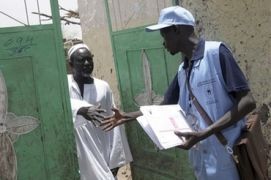Sudan 6th census includes rebel-held areas: official
March 22, 2021 (KHARTOUM) – Sudan’s national census will include the areas under the control of the armed movements to provide complete and accurate census information.
Last February, Prime Minister Abdullah Hamdok announced his government’s plan to conduct a national population and agricultural census from April 2021 until April 2022.
In statements to the Sudan News Agency SUNA on Monday, the Director of the Sixth Population and Housing Census, Alnaim Suleiman Abbas, said that the census includes areas under the control of some armed movements in the Nuba Mountains and the Blue Nile State and areas of security unrest and conflicts.
He added that the counting operations will include also count will encompass livestock and agricultural lands to reduce the cost.
Civil war and lack of adequate transportation, modern counting techniques in the past prevented enumerators from covering the remote areas and provide accurate information about the number of population.
The initial budget for the 6th census is estimated at $94 million, while its total cost exceeds $300 million. The government will provide about 53% of the budget, while 47% of it will be provided by international donors.
It is expected that 50,000 enumerators will participate in the 6th population census. They will be selected from among the residents of the areas where they will operate and will be trained to use modern technologies to obtain accurate data.
Alnaim explained that the geographic information system (GIS) and satellite images are among the techniques that will be used to produce reliable information.
Also, the army and traditional leaders will facilitate the counting process as they help to reach the population of remote areas and nomads.
The census is necessary to prepare for the general elections in the country at the end of the transitional period.
Further, the government needs accurate and updated information to identify the areas of poverty in the country to use it in its development plans to address it radically.
(ST)

